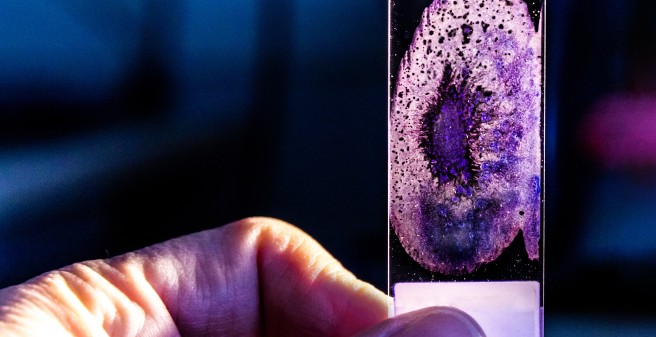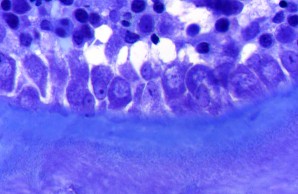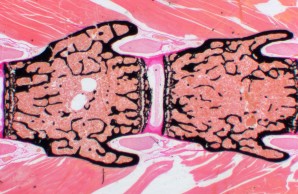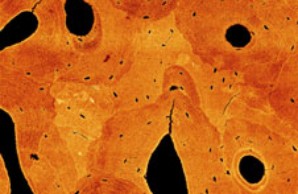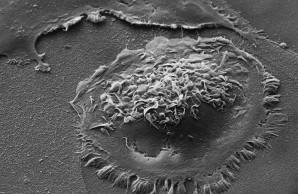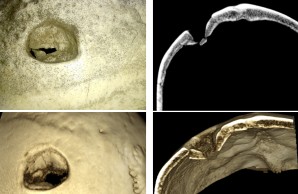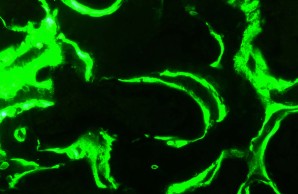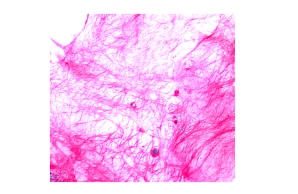Working groups at the IOBM
-
Translational Osteology and Biomechanics & Histologie
Divisional head:
Prof. Dr. med. Michael Amling
Priv.-Doz. Dr. rer. nat. T. Yorgan
Dr.-Ing. M. Hahn
The section Translation & Histology is mainly concerned with the comprehensive histological analysis of bone and bone-associated cells. The focus lies on the translation of mechanical to biological signals, the patho-mechanisms of genetic disorders of the musculoskeletal system and the implant/biomaterial interface with bone.
Lottestrasse 59
20529 Hamburg
Phone:+49 (0)40 7410 - 56373
Mail: amling (at) uke.de -
Molecular Osteology and Biomechanics
Divisional head:
Prof. Dr. rer. nat. Thorsten Schinke
Diverse signalling pathways influence bone accrual as well as skeletal quality and structure on the cellular and biochemical level. Basic principles of skeletal biology, causes of skeletal diseases and innovate therapeutic options are being investigated by utilizing appropriate in vitro and in vivo models. The direct interaction with the clinic facilitates a fast application of novel insights and continuously gives raises to new research initiatives.
Martinistrasse 52 (Campus Forschung, Gebäude N27, 1. Stock)
20246 Hamburg
Phone:+49 (0) 40 7410 - 58057
Mail: schinke (at) uke.de -
Bioengineering / Medical Technology
Divisional head:
Univ.-Prof. Dr. rer. medic. Björn Busse
Pathological alterations in the structural integrity and elemental composition of the bone matrix impact fracture resistance significantly and thereby affect the patients health status. The aim of the Heisenberg Research Group is to decipher the underlying mechanisms at each level of bone’s complex hierarchical structure using a multiscale, integrated approach combining osseous cell imaging with bone quality assessment and medical imaging techniques.
Lottestraße 55a
20529 Hamburg
Phone:+49 (0) 40 7410 - 56373
Mail: b.busse (at) uke.de -
Bone: local and systemic metabolism
Divisional head:
Dr. Jean-Pierre David
Bone is not only building the skeleton but is also interacting with other organs. More specifically bone is homing hematopoiesis and is acting as an endocrine organ regulating adipose tissues. These tissues are themselves main regulators of bone homeostasis, thereby establishing a complex regulatory loop. As consequence, pathological alteration of bone should locally affect hematopoiesis and immune responses and, via its systemic effect, impact adipose tissue and therefore metabolism. The group is addressing these questions using multiple mouse models for bone diseases with the goal of improving the treatment of bone related diseases.
Martinistrasse 52 (Campus Forschung, Gebäude N27, 1. Stock)
20246 Hamburg
Phone:+49 (0) 40 7410 - 54681
Mail: j.david (at) uke.de -
Cell Biology of Rare Diseases
Divisional head
Prof. Dr. rer. nat. Thomas Braulke
Martinistrasse 52 (Campus Forschung, Gebäude N27, 1. Stock)
20246 Hamburg
Phone:+49 (0) 40 7410 - 54493
Mail: braulke (at) uke.de -
Forensic Osteology
Divisional Head
Prof. Dr. med. Klaus Püschel
Prof. Dr. med. Michael AmlingThe forensic osteology at the IOBM is an interdisciplinary division between forensic medicine and osteology. The investigation of bone and its reaction to external and internal influences (e.g. violence, hunger, un/loading, diseases, medication) facilitates conclusions with regard to the circumstances that a person was exposed to locally or systemically. Furthermore these investigations allow for the evaluation of the causes and temporal progression of skeletal injuries.
The scope of the division of forensic osteology ranges from the assessment of current cases to paleontological studies.
Lottestrasse 59
20529 Hamburg
Phone:+49 (0)40 7410 - 56373
Mail: pueschel (at) uke.de -
Deep Phenotyping & Histomorphometry
Divisional head:
Priv.-Doz. Dr.rer.nat Timur A. Yorgan
The section Deep Phenotyping & Histomorphometry is focused on the detailed and in-depth analysis of osteological in vivo and in vitro models. These investigations give raise to comprehensive knowledge that allows drawing conclusions on basic process in skeletal biology and pathomechanisms of specific musculoskeletal disorders.
Through the application of a combination of innovative and classical methods of osteological research, we are able to address even the most challenging scientific questions. A special focus is on histomorphometry, the structural and cellular measurement of osteological sections.
Due to the close relation to the other working groups and the patient care of the department of osteology and biomechanics, our research takes place in an interdisciplinary environment with excellent translational possibilities.
Martinistrasse 52 (Campus Forschung, Gebäude N27, 1. Stock)
20246 Hamburg
Phone:+49 (0) 40 7410 - 58029
Mail: t.yorgan (at) uke.de -
Skeletal Pathobiochemistry
Divisional head
Prof. Dr. rer. nat. Sandra Pohl
The research group “Skeletal pathobiochemistry” aims to understand the molecular mechanisms balancing skeletal matrix synthesis and degradation and to elucidate the pathophysiological basis of genetically inherited skeletal disorders in childhood. Pursuing these goals, we study mouse and cell-based models of the diseases as well as patient material by the use of combined methods from biochemistry, molecular and cell biology as well as histology and immunhistochemistry in tight collaboration with various research groups both within and beyond IOBM.
Martinistrasse 52, N21
20246 Hamburg
Phone:+49 (0) 40 7410 - 55869
Mail: s.pohl (at) uke.de
